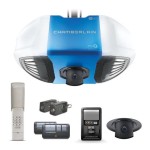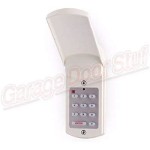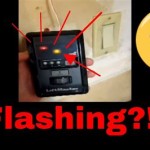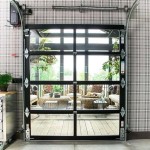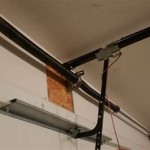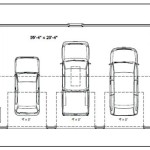Garage Door Does Not Open: Troubleshooting and Solutions
A malfunctioning garage door can be a significant inconvenience, disrupting daily routines and potentially compromising security. When a garage door refuses to open, it is crucial to systematically investigate the potential causes and implement appropriate solutions. This article provides a comprehensive guide to troubleshooting common issues that prevent a garage door from opening, along with practical steps to resolve them.
Power Supply Issues
One of the most basic, yet frequently overlooked, reasons for a garage door not opening is a problem with the power supply. A garage door opener relies on a consistent electrical current to function. If the power supply is interrupted, the opener will be rendered inoperable.
The first step in diagnosing a power supply issue is to verify that the garage door opener is properly plugged into a functioning electrical outlet. A simple way to test the outlet is to plug in another appliance, such as a lamp or a small electronic device. If the appliance works, the outlet is functioning correctly. If the appliance does not work, the problem lies with the outlet, and an electrician may be required to resolve the issue.
Another potential cause of power interruption is a tripped circuit breaker. The circuit breaker panel should be checked to ensure that the breaker controlling the garage door opener has not been tripped. If the breaker is tripped, it should be reset. However, it is important to note that repeatedly tripping circuit breakers can indicate a more serious underlying electrical problem that requires professional attention.
In some cases, a power surge or other electrical anomaly may damage the garage door opener's internal components. If the power supply is confirmed to be functioning correctly, but the opener still does not respond, it is possible that the opener itself has been damaged and needs repair or replacement.
Finally, check to see if the safety sensors are properly connected and aligned. Some systems will not function if the safety sensors aren't working.
Remote Control and Wall Switch Malfunctions
The remote control and wall switch are primary interfaces for operating a garage door. If either of these components malfunctions, the garage door may fail to open. Several factors can contribute to remote control and wall switch issues.
The most common problem with remote controls is depleted batteries. Replacing the batteries is a simple and often effective solution. When replacing batteries, it is crucial to use the correct type of batteries as specified by the remote control's manufacturer.
If the batteries are new, but the remote control still does not work, the remote control may need to be reprogrammed. Garage door openers typically use rolling code technology, which changes the access code each time the remote control is used. Over time, the remote control and the opener may become desynchronized, requiring reprogramming. The specific procedure for reprogramming a remote control varies depending on the make and model of the garage door opener. The owner's manual will provide detailed instructions.
Another possible cause is interference. Radio frequency (RF) interference from other electronic devices can disrupt the signal between the remote control and the garage door opener. Try moving away from potential sources of interference, such as Wi-Fi routers or cordless phones, to see if the remote control starts working.
The wall switch, also known as the control panel, may also be the source of the problem. The wall switch could be malfunctioning due to wiring issues or internal component failure. Inspect the wiring connections to the wall switch to ensure that they are secure and free from corrosion. If the wiring appears to be in good condition, the wall switch itself may need to be replaced.
In some cases, the lock or vacation mode may be engaged on the wall switch. This mode disables the remote control to prevent unauthorized access. Ensure that the lock or vacation mode is disengaged before attempting to use the remote control.
Mechanical Issues with the Garage Door
Beyond electrical or remote control problems, mechanical issues within the garage door system itself can prevent the door from opening. These issues often involve the springs, cables, rollers, or tracks.
Garage door springs are responsible for counterbalancing the weight of the door, making it easier to lift and lower. There are two main types of garage door springs: torsion springs and extension springs. Torsion springs are located above the garage door opening, while extension springs are located along the sides of the door. If a spring breaks, the garage door will become significantly heavier and may not open properly. Broken springs should only be replaced by qualified professionals due to the high tension involved, which can cause serious injury if handled improperly.
Cables are another critical component of the garage door system. Cables connect the springs to the bottom of the door, providing additional support and stability. If a cable breaks or becomes frayed, the garage door may become unbalanced and difficult to open. Similar to springs, cable repairs or replacements should be performed by experienced technicians.
Rollers are responsible for guiding the garage door along the tracks. Over time, rollers can become worn or damaged, causing friction and making it difficult for the door to move smoothly. Damaged rollers should be replaced to ensure proper door operation. Lubricating the rollers and tracks with a silicone-based lubricant can also help to reduce friction and improve performance.
The tracks are the metal channels that guide the garage door as it opens and closes. If the tracks become bent, misaligned, or obstructed, the door may become stuck or unable to open. Visually inspect the tracks for any signs of damage or obstruction. Bent tracks may need to be straightened or replaced. Debris, such as dirt, leaves, or small objects, can also accumulate in the tracks, preventing the rollers from moving freely. Clearing the tracks of any obstructions is essential.
Finally, ensure that the manual release cord is not engaged. This cord disengages the opener from the door, allowing it to be opened manually. If the cord is pulled, the door will not respond to the opener.
Safety Sensor Problems
Garage door openers are equipped with safety sensors designed to prevent the door from closing if an obstruction is detected in its path. These sensors are typically located near the bottom of the door opening, and they use an infrared beam to detect obstructions. If the safety sensors are misaligned, dirty, or malfunctioning, they can prevent the garage door from opening or closing.
One of the most common causes of safety sensor problems is misalignment. The sensors must be properly aligned so that the infrared beam is uninterrupted. If the sensors are not aligned, the opener will not function. Check the sensors to ensure that they are pointing directly at each other. If necessary, adjust the sensors until they are properly aligned. A solid green light on one sensor and a solid or blinking light on the other sensor often indicates proper alignment. The specific light indicators may vary depending on the manufacturer.
Dirty sensors can also interfere with the infrared beam. Dust, dirt, or debris can accumulate on the sensor lenses, blocking the beam and causing the opener to malfunction. Clean the sensor lenses with a soft, dry cloth to remove any dirt or debris.
Wiring problems can also affect the safety sensors. Check the wiring connections to the sensors to ensure that they are secure and free from corrosion. Loose or damaged wiring can prevent the sensors from functioning correctly. If necessary, replace the wiring or consult with a qualified technician.
In some cases, the safety sensors themselves may be defective and need to be replaced. If the sensors continue to malfunction after checking alignment, cleaning, and wiring, they may need to be replaced. Replacement sensors are typically available from garage door retailers or online suppliers.
Opener Limit Switch Adjustments
Garage door openers utilize limit switches to control the distance the door travels when opening and closing. These switches are adjustable and determine the point at which the opener stops moving the door. If the limit switches are improperly adjusted, the garage door may not open or close fully, or it may reverse direction unexpectedly.
The "up" limit switch controls the maximum height the garage door travels when opening. If the up limit switch is set too low, the door may stop before it reaches the fully open position. Conversely, if the up limit switch is set too high, the door may travel too far and cause damage to the door or the opener. The adjustment mechanism for the up limit switch typically involves turning a screw or dial located on the garage door opener unit. Small adjustments should be made, and the door's operation should be tested after each adjustment. Refer to the owner's manual for specific instructions on adjusting the up limit switch.
Similarly, the "down" limit switch controls the distance the garage door travels when closing. If the down limit switch is set too high, the door may not close completely, leaving a gap at the bottom. If the down limit switch is set too low, the door may close too tightly and damage the weather stripping or the door itself. Adjusting the down limit switch involves a similar procedure to adjusting the up limit switch. Small adjustments should be made, and the door's operation should be tested after each adjustment.
It's important to note that the limit switch adjustments should be made carefully and precisely. Over-adjusting the limit switches can cause the garage door opener to malfunction or damage the door. If unsure about how to adjust the limit switches, consult with a qualified garage door technician.
Obstructions in the Door's Path
Even with properly functioning mechanics and electronics, a physical obstruction can prevent a garage door from opening. It's essential to ensure the area around the garage door is clear.
The most obvious obstructions are physical items blocking the door's path. These could include vehicles parked too close, garbage cans, tools, or any other object left in the doorway. Carefully inspect the area for any such obstructions and remove them.
Accumulation of snow or ice can also obstruct a garage door, particularly during winter months. Snowdrifts can prevent the door from opening, and ice buildup can freeze the door to the ground. Remove any snow or ice from the area around the door to ensure that it can open freely. De-icing solutions can be used to melt ice buildup. Be careful not to use excessive force when trying to open a frozen door, as this could damage the door or the opener.
In some cases, landscaping can also obstruct a garage door. Overgrown bushes, tree branches, or vines can interfere with the door's movement. Trim any landscaping that is obstructing the door's path.

How To Fix A Garage Door That Won T Open

How To Troubleshoot A Garage Door The Home

Garage Door Won T Open All The Way 10 Reasons Why

If Your Garage Door Won T Open All The Way Here S How To Fix It

What To Do When Your Garage Door Is Not Opening

Garage Door Motor Turns But Does Not Open Solved

What Should I Do If My Garage Door Doesn T Open Repair

What To Do If Your Garage Door Won T Open Step By Guide

11 Most Common Reasons Why Your Garage Door Won T Open Hubpages

What To Check If Your Garage Door Won T Open Ace Hardware


